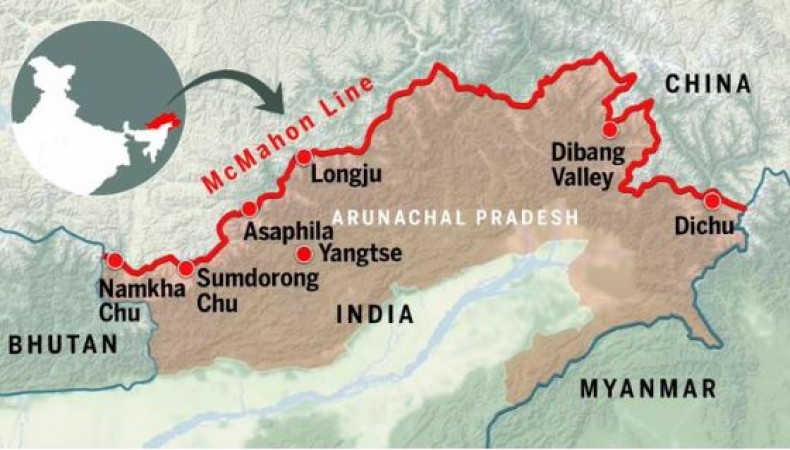
New Delhi: In a significant move, the United States Senate recently passed a resolution acknowledging the McMahon Line as the international boundary between China and Arunachal Pradesh, and affirming Arunachal Pradesh's status as an integral part of India. The resolution highlights the importance of standing by strategic partners, particularly India, in the face of growing threats posed by China in the Free and Open Indo-Pacific region. The McMahon Line, a disputed boundary line, has been a longstanding bone of contention between India and China, with each country holding differing viewpoints on its legitimacy and implications.
The McMahon Line and its Significance:
The McMahon Line, named after Henry McMahon, the then foreign secretary of British India, was established in 1914 as part of the Shimla Convention. This line delineates the boundary between China and India, specifically Arunachal Pradesh. The length of the boundary spans 890 kilometers, running from Bhutan's corner to the Isu Razi Pass on the Burma border, largely along the Himalayan crest.
China's Rejection and Disputed Stand:
While India considers the McMahon Line its legal national border, China refuses to accept it. China's objections stem from two main reasons. Firstly, Beijing asserts that Tibet was not a sovereign state and therefore lacked the authority to enter into treaties, rendering the McMahon Line invalid. Secondly, China maintains that it was not involved in the Shimla Agreement negotiations and hence is not bound by its provisions.
China's approach to the McMahon Line has been characterized by inconsistency. In 1960, China acknowledged the line in the Burma-China Boundary Treaty, albeit labeling it a "customary boundary." This dual stance underscores the complexity of the border dispute.
India-China Border Tensions and Historical Clashes:
The McMahon Line has been a focal point of the India-China border dispute, which spans the expansive Himalayan region. The two nations have encountered various confrontations along the border, resulting in tensions and occasional clashes. In December of the previous year, Indian and Chinese troops engaged in a skirmish in Arunachal Pradesh along the Line of Actual Control (LAC), marking one of the most significant clashes between the two sides in years. This incident led to minor injuries among soldiers.
In a more severe incident in June 2020, Indian and Chinese troops faced off using makeshift weapons, resulting in fatalities on both sides – the first deadly confrontation since 1975. This escalation saw the loss of lives of around 20 Indian soldiers and four Chinese soldiers. In January 2021, another confrontation took place near Sikkim, involving troops from both countries. This incident resulted in injuries on both sides. These incidents underscore the ongoing tension and volatility along the disputed border.
The recognition of the McMahon Line by the United States Senate as India's international boundary with China adds a new dimension to the border dispute between the two Asian giants. While India asserts the McMahon Line as its legal border, China's rejection, coupled with historical clashes, highlights the complexity of the issue. As both countries strive to address their differences and work towards peaceful resolutions, the border question remains a central challenge in their bilateral relationship. The historical context, geopolitical implications, and the intricate dynamics between India, China, and the international community contribute to the ongoing saga of the McMahon Line dispute.
Lukhmi: The Square Samosa That's Redefining Savory Snacking
Heritage Wonders of Uttar Pradesh: A Tale of Architecture and History